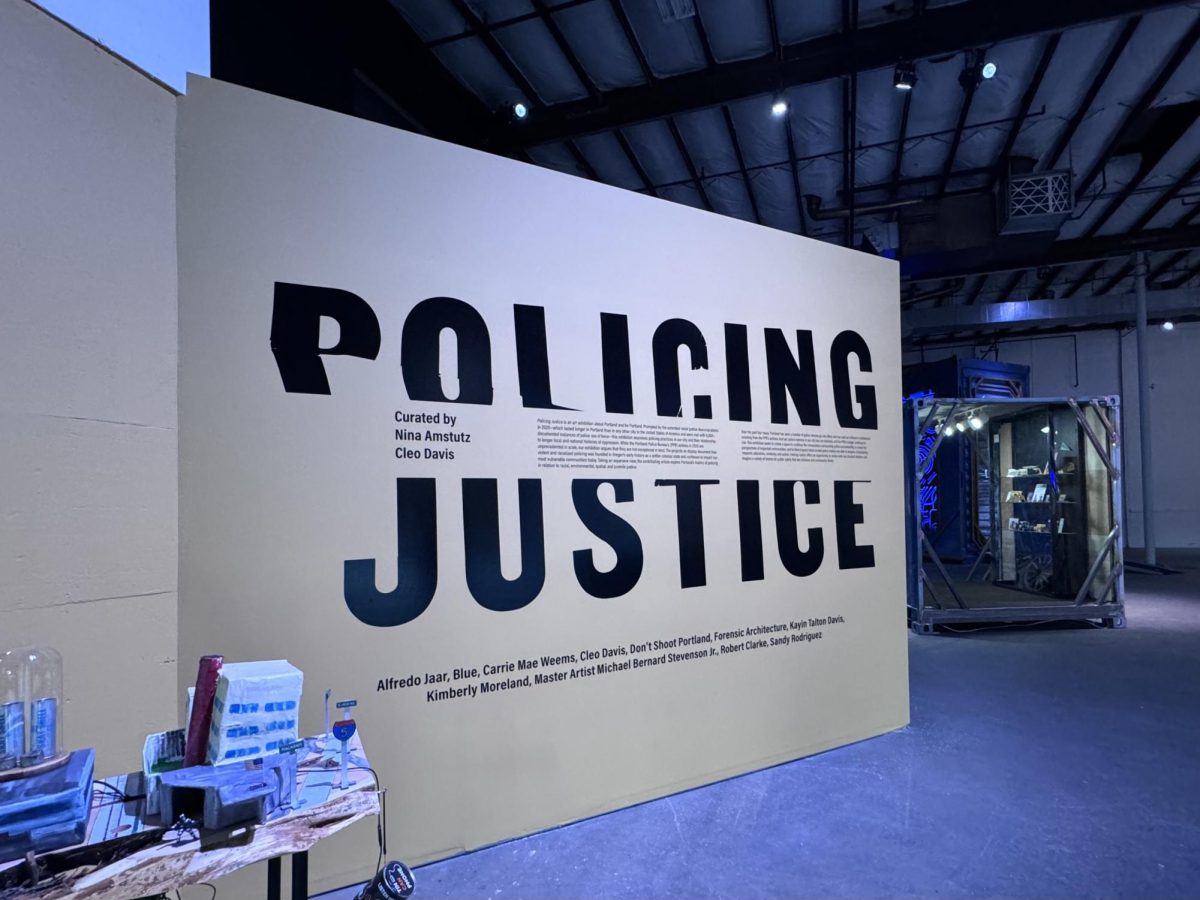Futuristic gold and blue time capsules, sprawling forensic recreations and bright neon lights that read “Center of Injustice” come together to form the “Policing Justice” exhibit at the Portland Institute of Contemporary Art (PICA).
“Prompted by the extended racial justice demonstrations in 2020… the exhibition examines police violence in [Portland] and its relationship to longer local and national histories of oppression,” reads the curatorial statement by co-curators Nina Amstutz and Cleo Davis.
With free admission through May 19, the exhibit explores policing practices through the lens of artists who have witnessed and documented police brutality in Portland, Oregon and beyond.
Installations include “Mapping the Pipeline” by Master Artist Michael Bernard Stevenson Jr. and Blue, a series of tabletop sculptures showing how the school-to-prison pipeline plays out across Portland, as well as “From Toxic Air to Toxic Language” by Forensic Architecture, which uses forensic recreations to map the tear gas used by Portland Police.
Taishona Carpenter is the board president of Don’t Shoot Portland, an arts and education nonprofit that designed “The Center of Injustice” installation within the exhibit. “The Center of Injustice” features archival news clippings, lawsuit documents and protest signs from a decade of Don’t Shoot Portland’s social justice activism and civic advocacy.
“We wanted to show the timeline of not only our activism but police injustice and brutality here in Portland,” said Carpenter.
The piece’s name is a play on the Multnomah County Justice Center, which is home to the county jail and police headquarters.
“We wanted it to show that there’s a lot of injustice that happens within those very halls that are supposed to serve justice and accountability,” said Carpenter.
Recently, a press conference for the family of Manny Clark-Johnson, a Black man who was wrongfully killed by Portland police in November 2022 according to reports by Koin News, was held within the installation, merging art with ongoing calls against police brutality.
“Once the writing is on the walls, you can’t deny that this is something that is happening,” Carpenter said.

